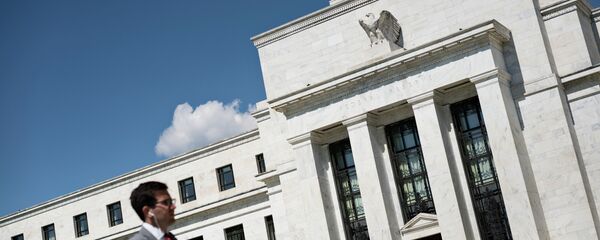Kristian Rouz – Even though the US economy is headed for a strong year-end amidst solid consumer demand, business equipment orders unexpectedly dropped last month, reflecting structural challenges to the industrial resurgence. Overall, capital goods shipments increased, and business investment remains positive.
The main challenges to the US economy remain the same as in the past two years, even though the Trump administration is gradually implementing its reforms aimed at de-regulation and supply-side fiscal stimulus. Wall Street and the broader financial sector are still far above Main Street expansion, and this discrepancy jeopardizes longer-term growth.
READ MORE: Gold Rises, Dollar Declines as Fed Hints at Possible Price-Level Targeting
Despite business sentiment improving over the past year due to the positive sentiment surrounding the business-friendly Trump administration, lingering structural setbacks still carry the threat of a recession.
According to a report from the Commerce Department, orders for non-defense capital goods excluding aircraft fell 0.5 percent in October. This figure reflects short-term business spending plans, meaning investment outlook for the upcoming months is mildly negative.
However, many analysts expect a solid economic performance in the current quarter.
“Fed policymakers will likely be impressed with the positive overall trend of business investment in equipment this year,” Chris Rupkey of New York-based MUFG said. “Interest rates do not need to be left at such low levels if the goal is to further business investment.”
In other figures, orders for cars and parts rose 1.7 percent, whilst fabricated metal products dropped 0.9 percent, and defense capital goods crashed 9.6 percent as the Defense Department still struggles to make ends meet during the budget limbo.
“The solid trend for the shipments data through October suggests that the fourth quarter will be another strong quarter for equipment spending,” Daniel Silver of JPMorgan in New York said. “We see some upside risk to our real GDP growth forecast for the fourth quarter.”
Last week, House GOP gave the green light to the Trump administration’s tax plan, lowering corporate taxes from 35 percent to 20 percent, and cutting individual income taxes as well. This is poised to boost business investment and re-investment, meaning the fiscal stimulus will provide a substantial push to economic growth.
READ MORE: US Economy Grows 3% in Q3 as Inventories, Trade Offsets Hurricane Woes
Meanwhile, orders for commercial aircraft alone dropped 18.6 percent in October, following a 33.9-percent increase the previous month. High volatility in the sector reflects issues in steel and industrial metals shipments, in the wake of last month’s scandal surrounding the Japanese steelmaker, Kobe Steel.
Business investment in equipment has driven economic growth in the past four quarters, and October’s slowdown might reflect a moderation in GDP growth, whilst the positive effects of the fiscal stimulus will pass on to the economy closer to the end of the first quarter.
The pace of economic reform remains slow due to partisan politics in Washington, and the obstruction of President Trump’s agenda. Nonetheless, market participants expect the new fiscal policy, and the normalization in Fed interest rates to boost overall economic expansion to a sustainable pace of above 3 percent per year by late 2018.



